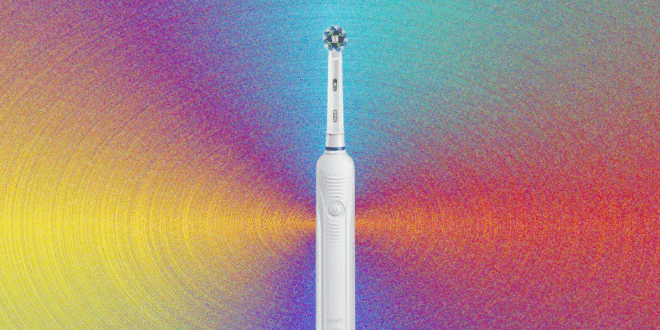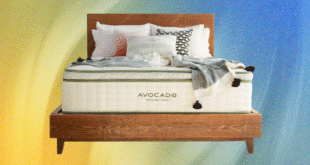Honorable Mentions
There are far more electric toothbrushes than we can recommend in a single guide. If none of the above options appeal to you, one of these might do the trick.
Photograph: Oclean
Oclean X Ultra S Electric Toothbrush for $130: Oclean makes great electric toothbrushes that clean well without vibrating your brain around. They’re a bit pricey, but if you or your kid would benefit from a voice assistant telling you that you’re brushing too fast or applying too much pressure, this particular model might be worth the money spent. The voice frustrated one of our testers—but maybe that’s a good thing. Oclean brushes connect to the brand’s app where you can access detailed reports about your brushing habits and efficiency, but it isn’t necessary, thanks to the screen on the actual brush itself.
Snow LED Whitening Electric Sonic Toothbrush for $79: I found myself leaning toward sensitive options with brands like Moon, but I have been plenty happy with the standard setting for Snow’s LED toothbrush. There are settings for whitening and polishing too. The brush also has blue-light technology built into it to help whiten your teeth even on the non-whitening settings, and I do think mine look a touch brighter after weeks of use—you won’t get the same effect as a true whitening product if you’re looking for serious brightness, but I like that this can help me try to keep the tea stains away. My only complaint is the price, but if you’re looking for something powerful but gentle, this is a great choice. —Nena Farrell
Philips One by Sonicare Toothbrush for $25: This was our original budget pick, but Bitvae’s is more powerful, rechargeable, and cheaper. Still, this one is cute, thin, and offers gentle vibrations for a step above a manual brush. It also comes with a carrying case.
AquaSonic Black Series for $50: This brush also comes with eight brush heads, like the Bitvae above, which is nice for the price. I think it cleans well, but the heads are a bit small, and the whole thing was too vibratey for me, like the body was vibrating the plastic of the brush head more than the bristles.
What About U-Shaped Toothbrushes?
Photograph: Autobrush
There are many U-shaped toothbrushes available now that use a mouthpiece full of bristles to brush one section of teeth—or sometimes the entire mouth—all at once in around 30 seconds. We’ve tried a few and think they’re fine to use in addition to regular brushing. None of them are as effective as standard electric toothbrushes. Bill Busch of North Kansas City Dental and Joseph Salim, owner of Sutton Place Dental Associates, agree that these aren’t replacements.
“I find the best use for it is for children and in nursing home environments, where to get quick and easy compliance to brush is critical,” Busch says.
AutoBrush Sonic Pro for $119: AutoBrush is the original in the category, and Medea has tried both the old silicone-bristle model and the new nylon version. She wasn’t wowed by either, but if you want a U-shaped brush and can get this one on sale, try it. You can read about AutoBrush’s study with Salus Research here.
SymplBrush for $149: Former WIRED reviewer Brenda Stolyar used SymplBrush, which looks like a mix of Willo and AutoBrush, and liked it. “I can tell it hits each tooth and each side of it that might be missed with a standard toothbrush,” she says. “It’s a nice, all-around, clean-type feeling.” But she notes that it didn’t always get the buildup around her gumline, so she’d have to go in with a brush anyway. As someone who brushes too hard, she felt this offered a gentler experience for her gums.
Y-Brush DuoBrush Sonic for $80: This is a great option because it has a U-shaped attachment and a standard brush head and isn’t crazily priced. Medea was impressed by how clean her teeth felt, and having both reminded her that she still needed a deep clean in between quick sessions.
Frequently Asked Questions
What’s the Correct Way to Brush Your Teeth?
- Floss before brushing at least once a day, ideally twice (morning and evening). Floss picks, like this refillable version from Quip, are supplementary (not interchangeable).
- Brush at least twice a day, two minutes at a time, 30 seconds for each quadrant. The American Dental Association recommends placing the brush against the gum line at a 45-degree angle and moving the brush in gentle, vertical strokes to not damage the enamel of your teeth. Make sure to clean the inside surfaces, too.
- Be gentle. If your toothbrush bristles look like they’ve been crushed, you’re brushing too hard. You also want to use a soft-bristled brush to prevent gingival injury.
- Don’t forget your tongue. Bacteria build up on your tongue, which can cause bad breath despite clean teeth. You can use the tongue cleaner that’s on the backside of some brush heads or purchase a separate tongue scraper. I like this one for $10.
- Don’t rinse. If you’re using fluoride toothpaste—which helps prevent tooth decay—you shouldn’t rinse your mouth or use mouthwash right away.
Which Toothbrushes Do Dentists Recommend?
There is a seemingly endless array of electric toothbrushes to pick from, but they generally fall into two categories: sonic and oscillating. (For U-shaped brushes, see below.) The best toothbrush is the one you’ll use twice a day. You can buy the most highly rated toothbrush around, but if it feels weird in your mouth or hurts your gums, you might not want to use it.
Ada S. Cooper, a dentist and consumer adviser spokesperson for the American Dental Association, said that both styles are effective in reducing plaque. She notes that you should talk to a dentist about which one will work best for you, and she says to look for the ADA Seal of Acceptance. Most of our picks have it. (If they don’t, that doesn’t necessarily mean they’re bad.)
- A sonic toothbrush looks similar to a manual brush, with an oval brush head. It vibrates gently and quietly, using high-speed side-to-side bristle motion to break up plaque. Sonicare was the first brand to introduce a sonic toothbrush and is probably the most well-known name in the category.
- Oscillating toothbrushes rotate and pulsate—oscillate means to move or swing back and forth—around the whole tooth. They tend to be louder than sonic brushes and might make your head vibrate more while you brush. You will get used to this if you’re new to electric brushes. Oral-B is probably the best-known brand for these types of electric toothbrushes.
What Features Should I Look For in the Best Electric Toothbrush?
In addition to choosing between oscillating and sonic toothbrushes, these are a few other factors that you might want to think about.
- Future costs: You need to replace the brush head about every three months—more if you tend to brush with too much pressure. Heads range in price depending on the brand and type, so it’s a good idea to check beforehand. Oral-B offers various types of heads in packs ranging from $9 for one to $55 for 10. Many brands offer subscriptions for cheaper. You can often find off-brand heads that cost less but work with the handle, though you might not get the same quality.
- Battery life: Electric toothbrushes have either rechargeable batteries or replaceable ones. Battery life depends on the brush, but it could need charging every week to every few months. Do you want to commit to keeping it charged, keeping a spare battery on hand, or do you prefer the ease of a manual brush that works anywhere anytime?
- Brand reputation: If you buy from a brand like Sonicare or Oral-B, there’s a high likelihood that you’ll be able to buy replacement brush heads or get ahold of customer service should you need anything. You can also get this in-store instead of having to order online. We recommend a few newer brands here, many of which only have online storefronts, and there’s no way to predict whether they’ll be around in five years. Some make great brushes, however, so it may be worth it if the initial cost isn’t too high.
How Do I Clean My Electric Toothbrush?
Per the American Dental Association’s advice:
- Rinse your toothbrush well after each use.
- For extra sanitation, soak it in antibacterial mouthwash or clean it in the dishwasher.
- Consider using a UV sanitizer to eliminate microorganisms.
- Always store it upright and let it air dry between uses.
- Replace your toothbrush every three months or sooner if the bristles wear out.
How Do I Dispose of Old Toothbrush Heads?
First, check with your local and state organizations on the disposal methods or restrictions in your area. Some companies offer specialized recycling programs for their products, like Suri and Oral-B’s Recycle On Us program—which only accepts brush heads. You can also repurpose your old toothbrushes for polishing jewelry, scrubbing corners, and other errands.
Do Charcoal Toothbrushes Work?
Charcoal toothbrushes are popular due to claims that activated charcoal can reduce bacteria and whiten teeth. But as of today, there’s limited clinical evidence to support these claims, and many health care providers remain cautious. Some experts say that when used in moderation, charcoal might be safe in certain products. But brushing with it regularly could wear enamel over time.
If you’re curious about trying one, check with your dentist first.
Are Electric Toothbrushes FSA eligible?
According to the FSA, “Electric toothbrushes are not eligible for reimbursement with flexible spending accounts (FSA), health savings accounts (HSA), health reimbursement accounts (HRA), dependent care flexible spending accounts, and limited-purpose flexible spending accounts (LPFSA) because they are general health products.”
Power up with unlimited access to WIRED. Get best-in-class reporting that’s too important to ignore for just $2.50 $1 per month for 1 year. Includes unlimited digital access and exclusive subscriber-only content. Subscribe Today.



